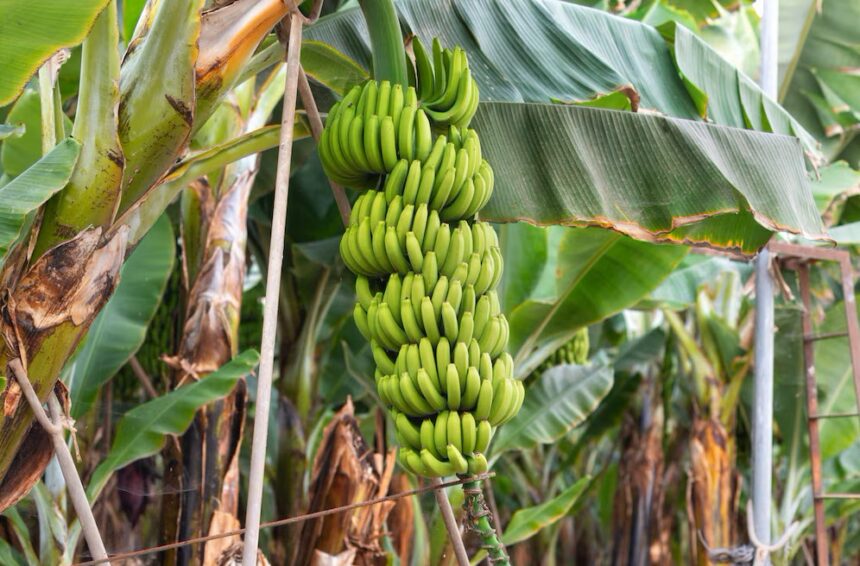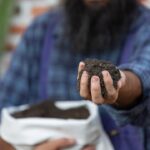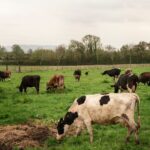Banana farming has long been an essential agricultural activity in South Africa, and KwaZulu-Natal (KZN) is particularly well-suited for this crop. The province’s warm climate, fertile soils, and abundant rainfall make it an ideal location for growing bananas. For those interested in starting a banana farm or improving an existing operation in KZN, this guide outlines the essential factors and best practices for successful banana farming.
Ideal Growing Conditions for Bananas in KZN
Bananas thrive in tropical and subtropical climates, and KwaZulu-Natal’s conditions are perfect for the crop. The key requirements for banana cultivation are:
- Temperature: Bananas require warm temperatures to grow well, with an ideal range between 25°C and 30°C. Temperatures below 10°C can damage the plant, while excessive heat can stress it.
- Rainfall: Bananas require a lot of water. KZN, with its high rainfall, provides an excellent environment. However, during dry spells, irrigation may be necessary to maintain consistent growth.
- Soil: Well-drained, fertile soil is essential for banana farming. The soil should be rich in organic matter and slightly acidic (pH 5.5 to 6.5). KZN’s soils are generally fertile, but soil preparation and proper fertilization are vital to achieve good yields.
- Altitude: Bananas do well at altitudes of up to 1,000 meters above sea level, which is common in many parts of KZN.
Land Preparation and Planting
- Site Selection: Choose a site that is sheltered from strong winds, as banana plants have large leaves that can easily be damaged. Ideal locations are gentle slopes or flat land that allows for good drainage.
- Soil Testing: Before planting, conduct a soil test to assess the nutrient levels and pH. This will guide you on the types of fertilizers to use and help you prepare the soil properly.
- Land Preparation: Clear the land of weeds, and if necessary, apply organic matter to improve the soil structure. A deep tilling process can be beneficial to ensure the soil is loose enough for root development.
- Planting: Bananas are typically grown from suckers or tissue-cultured plantlets. Space the plants about 3 to 4 meters apart, depending on the variety, to allow for good air circulation and prevent overcrowding. Make sure the planting holes are deep enough to cover the roots without damaging them.
Care and Maintenance
- Watering: While bananas need consistent moisture, they don’t like standing water. Ensure proper drainage on the farm to avoid waterlogging. During dry periods, regular irrigation is important, especially for younger plants.
- Fertilization: Bananas are heavy feeders, so regular fertilization is necessary. Apply a balanced fertilizer to provide key nutrients such as potassium, nitrogen, and phosphorus. Organic compost can also be used to improve soil health. Banana plants require frequent fertilization throughout the growing season to support their rapid growth.
- Mulching: Use organic mulch, such as leaves, grass, or straw, to help conserve soil moisture, control weeds, and provide nutrients as it decomposes. Mulching also prevents soil erosion during heavy rainfall.
- Weed Control: Weeds compete with banana plants for water and nutrients. Regularly remove weeds, either manually or with herbicides, ensuring they don’t hinder the growth of the bananas.
- Pruning: Proper pruning is essential for optimal growth and yield. Remove dead leaves and any damaged or diseased plants. Always ensure that the growing tip of the banana plant remains unharmed to promote healthy development.
- Pest and Disease Management: Common pests that affect banana plants include the banana weevil and aphids. Regularly inspect plants for pests and apply appropriate control methods, such as neem oil or insecticides, when necessary. Additionally, fungal diseases like black sigatoka can be a problem in KZN. Use fungicides and practice good sanitation to prevent the spread of disease.
Harvesting Bananas
Bananas typically take 9 to 12 months to mature, depending on the variety and growing conditions. The harvest period varies, but the bananas should be harvested when the fruits are plump and the fingers have started to fill out. Bananas are usually harvested when they are still green, as they ripen during transport and storage.
- Cutting the Bunch: Use a sharp knife to cut the bunch carefully. It’s important to avoid damaging the fruit during harvesting.
- Post-Harvest Handling: After harvesting, bananas need to be handled with care to avoid bruising. They are typically stored in cool, dry conditions to allow them to ripen slowly. Proper ripening management is essential to ensure the bananas reach the market in the best condition.
Marketing Your Bananas
KwaZulu-Natal is a significant producer of bananas, and the province has access to both local and international markets. To maximize your profits:
- Direct Sales: Farmers can sell bananas directly to supermarkets, wholesalers, and fresh produce markets in KZN. Developing relationships with buyers can help ensure consistent sales.
- Value Addition: Consider diversifying your products by processing bananas into value-added products such as dried bananas, banana chips, or banana puree. This can increase the profitability of your farm.
- Export Opportunities: KZN’s proximity to major ports makes it easier to export bananas to other regions or internationally. Understanding export requirements and certification processes will be essential for reaching global markets.
Banana farming in KwaZulu-Natal offers an excellent opportunity for farmers looking to diversify their crops or start a new venture. With the right environmental conditions, proper land preparation, and diligent care, banana farming can be a profitable and rewarding business. By staying informed about best practices, managing pests and diseases, and ensuring high-quality produce, banana farmers in KZN can thrive in a competitive market and contribute to the province’s agricultural success.
Join 'Farmers Mag' WhatsApp Channel
Get the latest Farming news and tips delivered straight to your WhatsApp
CLICK HERE TO JOIN






